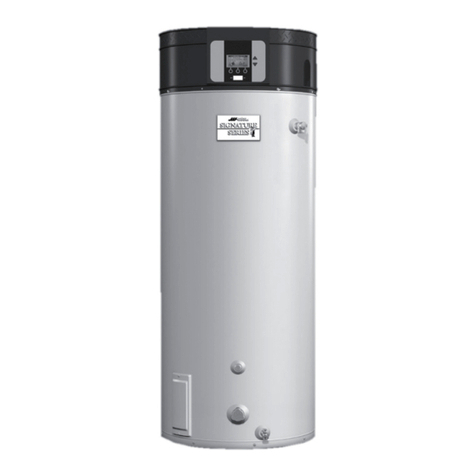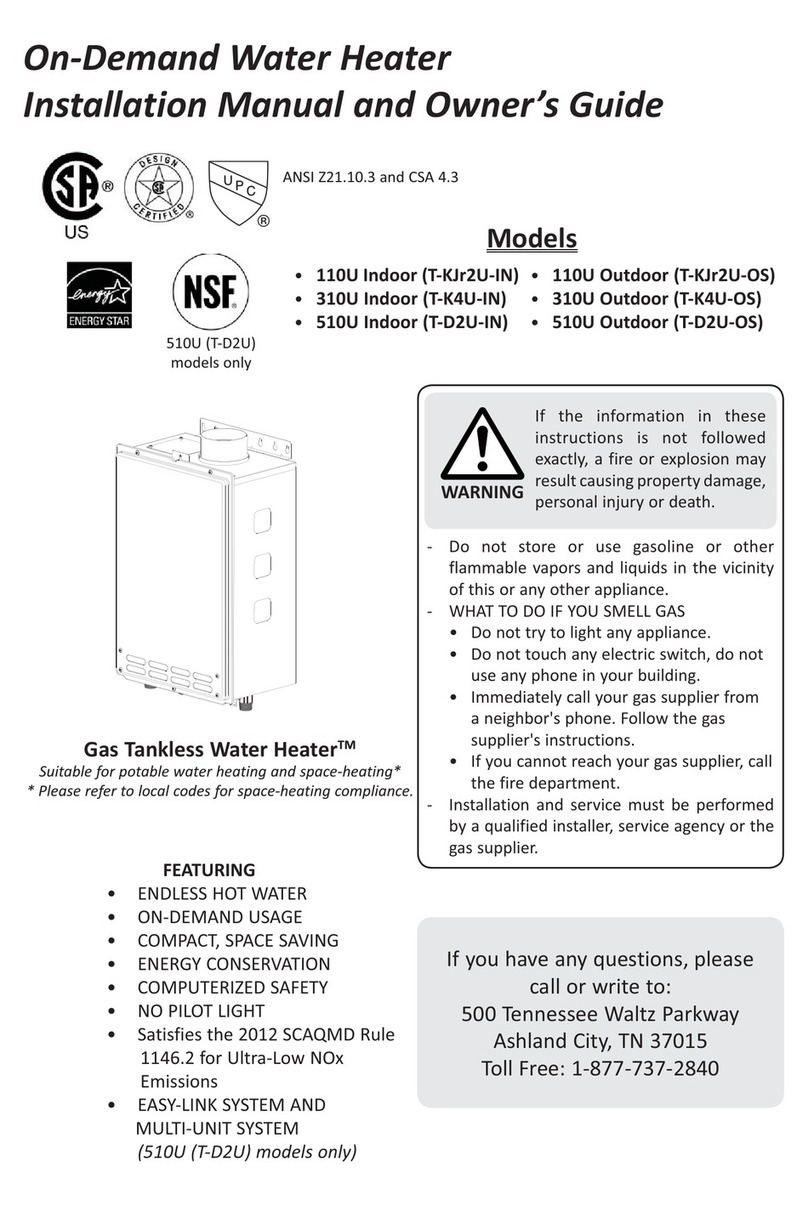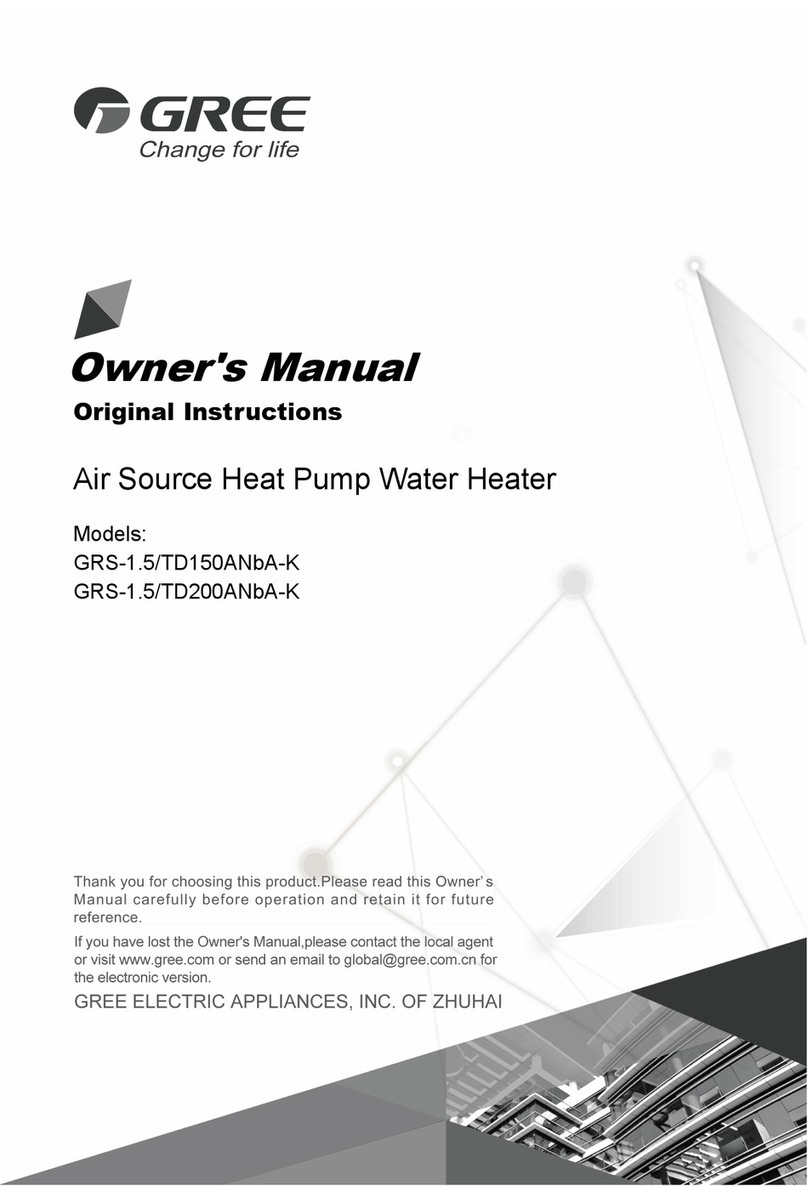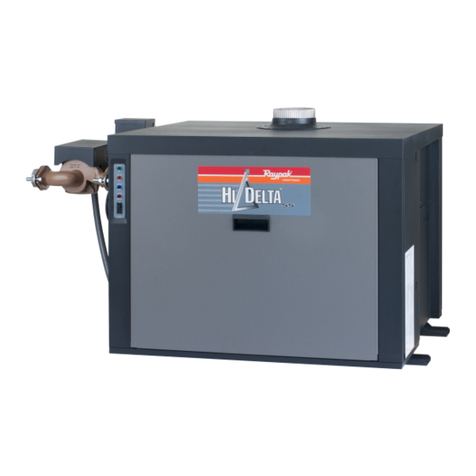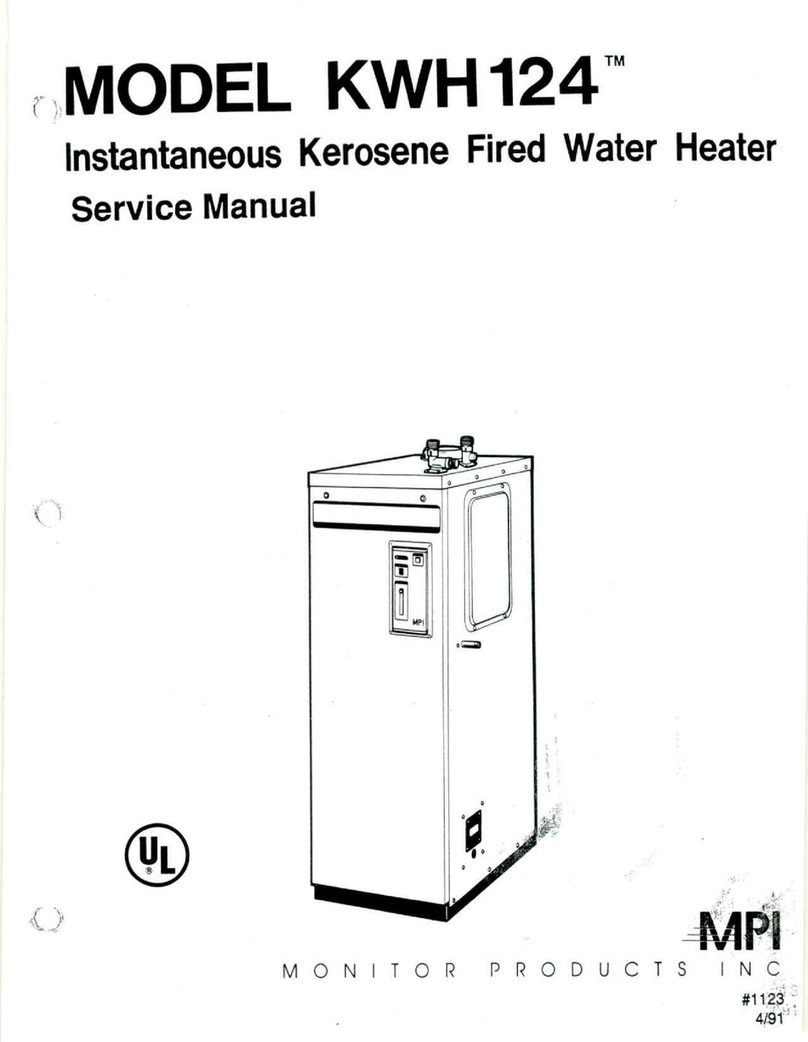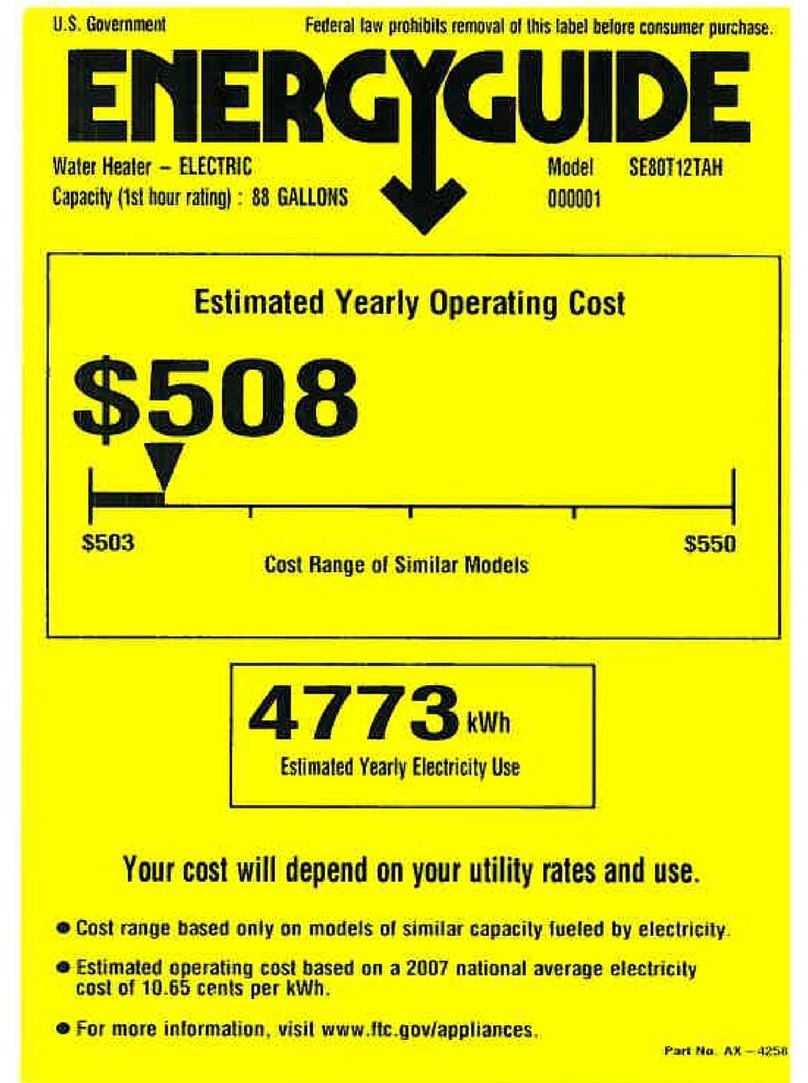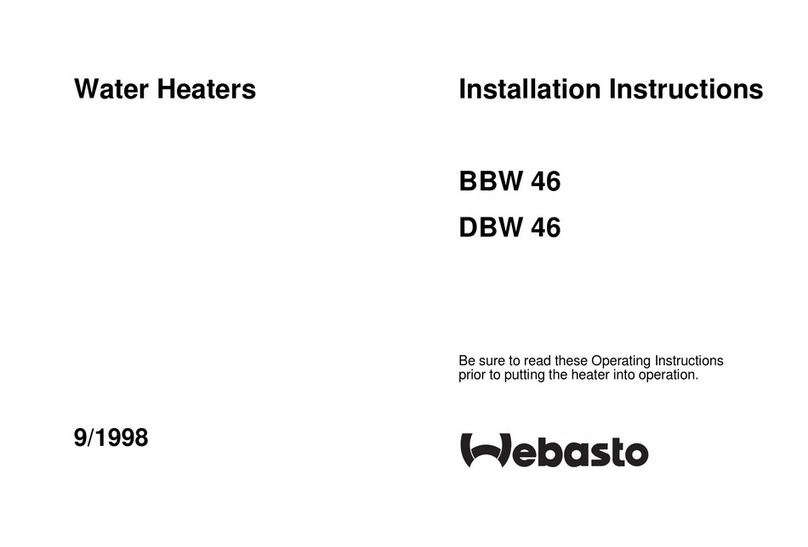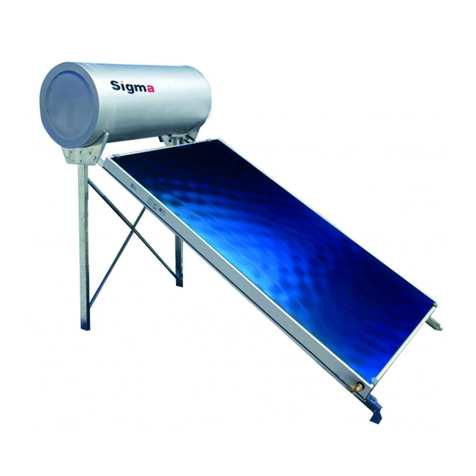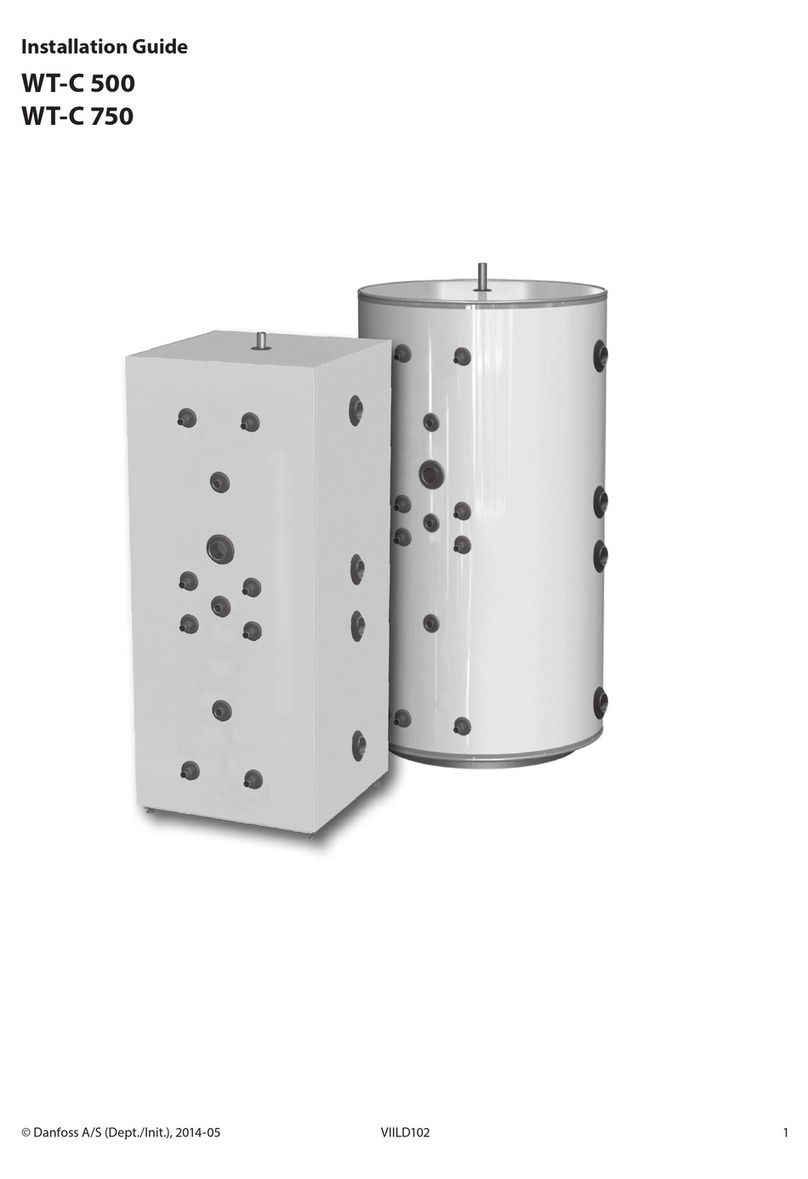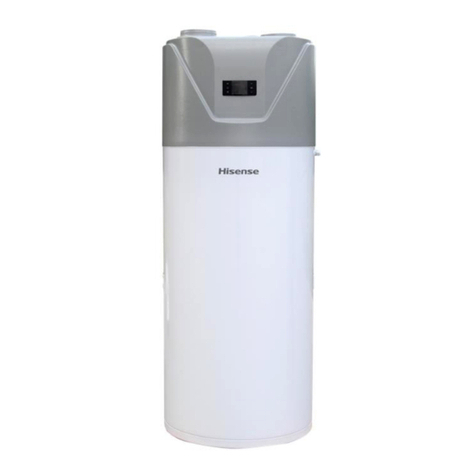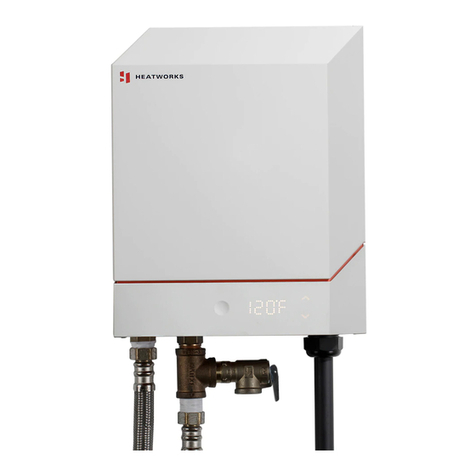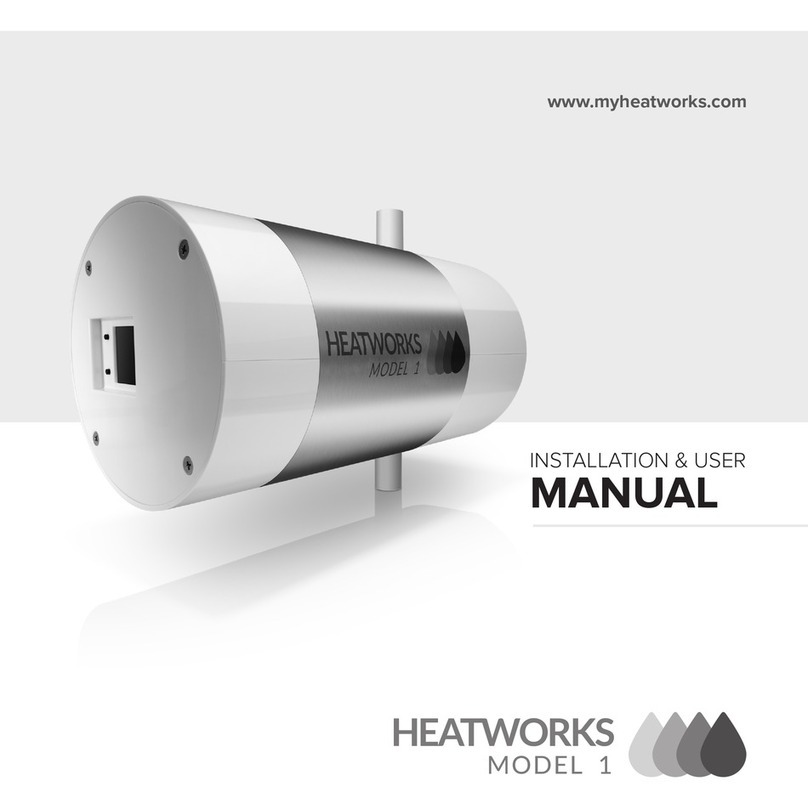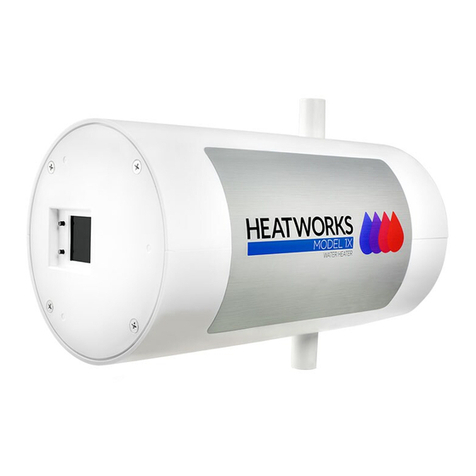
16 | www.myheatworks.com CAUTION: Breaker must remain o until installation is complete.
ELECTRICAL SERVICE
According to the denition in the National Electric Code (also known as NFPA 70),
an appliance load that is not continuous for three hours or more is considered non-
continuous.Therefore, the MODEL 3 Water Heater, when used for standard domestic
hot water applications, is considered a non-continuous heating appliance. Due to the
diversity of water heating in a home, the load (amps) contribution of the MODEL 3 to the
overall service load of the home or building can be calculated using the optional methods
of NEC, sections NEC 220-82 or 220-83. For new dwellings, the service load should be
calculated using NEC 220-82. For existing dwellings, the service load should be calculated
using NEC 220-83. By both calculation methods, the MODEL 3 load is generally added to
the service load at 40% of its maximum nameplate rating.
For instance, the full load current rating of the MODEL 3 Water Heater is 100 A and 40%
of this rating is 40 A.The 40 A is typically the load added to the overall service load of
the dwelling when using the optional calculation methods as described in NEC 220-82
and 220-83, not the full load current rating of 100 A. (Note that a conventional electric
water heater rated for use on a 30 A circuit will draw 4.5 kW or 18.75 A.) Using the same
calculation method, 40% of the nameplate rating for a conventional 4.5 kW electric tank
water heater is 7.5 A. So, one MODEL 3 will add 32.5 A (40 A minus 7.5 A) additional amps
to the service load since 7.5 A were already available for the existing tank.
POWER/VOLTAGE MODULATION
During operation, the MODEL 3 Water Heater is designed to use only the power necessary
to heat the water for various combinations of temperature rise and ow rate.
DISCONNECTS AND SUBPANELS
Electrical disconnect devices do not contain circuit breakers and are not required by
the NEC for residential appliances such as the MODEL 3 or any appliance rated less
than 300 volts. However, disconnects may be required by the NEC for motor loads and
for appliances with multiple circuits in commercial applications. Electrical subpanels
or parallel panels, containing circuit breakers, may be used with appliances such as
the MODEL 3 in residential and commercial applications. In new, and in some existing
residential construction, there are generally enough breaker spaces in the main electrical
panel to accommodate the circuit breaker associated with the MODEL 3. An electrician’s
load analysis is recommended if there is doubt about available breaker spaces. However,
in some existing homes, the main electrical panel may be nearly full of circuit breakers
serving existing loads. In these cases, one or more subpanels, each with a single large
breaker rated for the entire load of the water heater, can be installed off the main panel.
The boxes for a 100 A subpanel can be purchased for about $50 each, and the breaker for
about $40. Smaller boxes and breakers are slightly less expensive.
BRANCH CIRCUITS AND BREAKERS
As a non-continuous heating appliance, the branch circuit wires and breakers must be
sized to at least 100% of the maximum ampere rating of the appliance.This is particularly
important to avoid over heating of the wires at the connections to the breakers.
Overheating at the breaker connections may cause nuisance or premature breaker trips.
It is recommended that the copper wire for the branch circuits and subfeeds be rated for
at least 75° C. If you useTHHN, which is rated for 90° C, the wire gauge is smaller than
standard 75° C wire, and the nylon covering makes it much easier to pull.




















